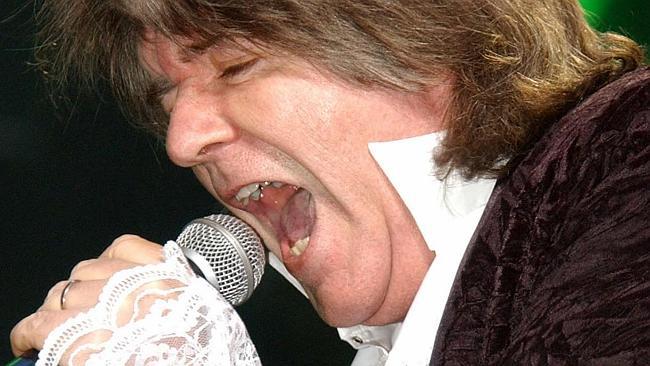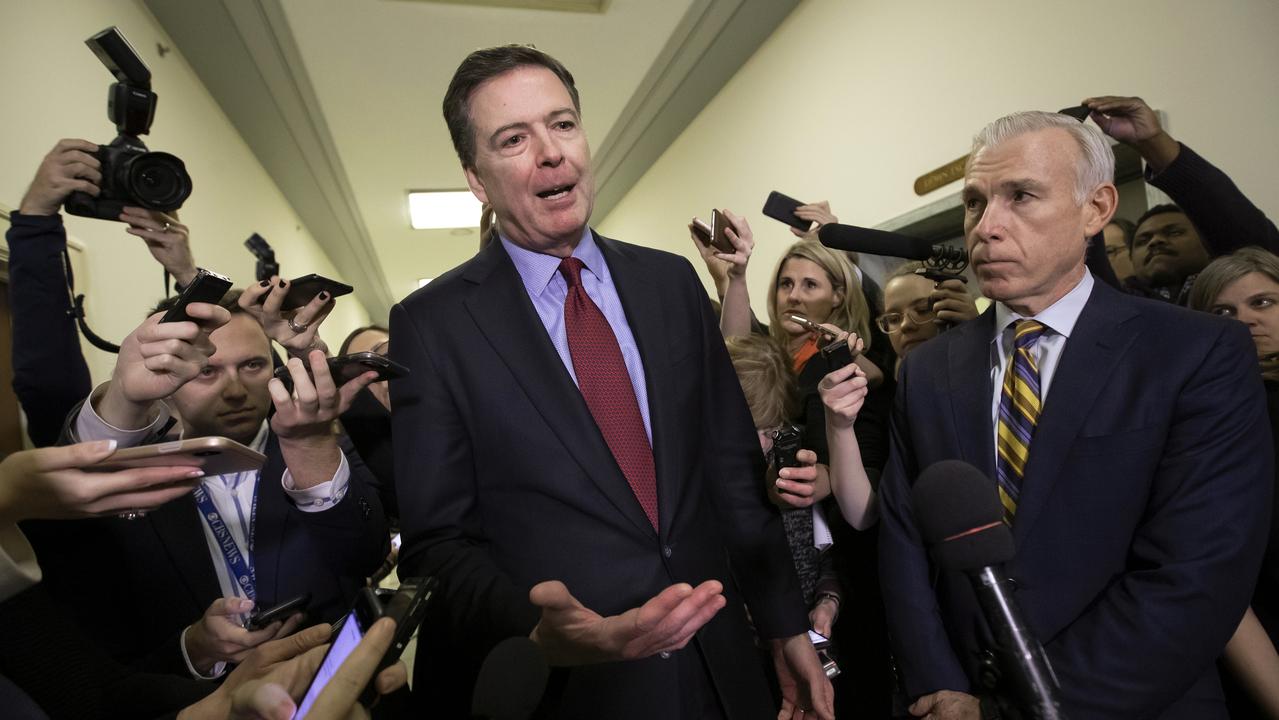A master of all styles
JIM Keays’ adventures across a range of Oz Rock genres spanned six decades.

IT is easy to remember Jim Keays as the singer with the Master’s Apprentices. It is equally easy to recall him as the Boy from the Stars. Many might even think that, like the band from which he so famously emerged, he was obsessed with the blues, or indulged in psychedelic pop, or wrote hard rock songs and even embarked on long vinyl adventures into progressive rock.
Easy, because Keays did all that. Until days before he died last Friday, he stayed the course on the most restlessly eclectic journey across Australian rock’n’roll.
At lunch last month, Keays talked enthusiastically about his new album and how it was being mastered in the US “as we speak”.
For the ailing Keays the future beckoned. He is gone — but the future for his music is unchanged.
From the moment he heard early rock’n’roll on the radio in 1957, Keays, then 11, wanted to be in a band and make music. He would sing, or perhaps play bass, maybe blow a harmonica — “whatever they needed!”
He was of that generation of Australian rock musicians who arrived as children in cattle class on the migrant ships fulfilling the dreams for a bigger Australia.
It was the fall of Singapore and wartime British prime minister Winston Churchill’s insouciant attitude to Australia’s fate that helped create Australia’s rock music scene of the 1960s.
In 1946, prime minister Ben Chifley asked his immigration minister to fashion a mass migration scheme to help fill our cities. It was the deeply conservative Arthur Calwell who would be the unwitting midwife to the local rock scene that flowered after the Beatles’ 1964 Australian tour.
Keays, who had been born in Scotland and adopted by a couple who migrated here, saw the Beatles in Adelaide, paying 37 shillings and sixpence. “That would be a lot of money to me back then,” he told me last month. “I don’t know where I got it from, but I wasn’t going to miss the Beatles.”
Keays served a brief apprenticeship with the Mustangs — a Shadows-inspired instrumental outfit that decided to get with the fast-moving times and employ a singer. Crucially, that band included Mick Bower on guitar.
Changing their name to the Masters Apprentices — originally without an apostrophe in a pre-punk finger-sign to conformity — in honour of the great bluesmen they revered, the band nevertheless quickly explored well beyond those musical boundaries.
But, sticking to the script, at least for the first single, Undecided, the band delivered a storming and raw classic of proto-punk that was well in advance of the Rolling Stones at the time, and at least equal to the robust aggression of the Who.
The song had been written the night before it was recorded by Bower and fellow guitarist Rick Morrison. The distorted guitar effect today sounds prescient, and was a first for an Australian record, but it was nothing more than a faulty amplifier valve.
The reel-to-reel tape of the incendiary performance was placed in a white box. It didn’t yet have a name. A Texta marked it “undecided” and an Australian classic was born.
From there the band went everywhere: from Adelaide to Melbourne and Sydney, and, in time, Abbey Road.
It swerved from raw R&B to the gentle melancholic psychedelia of Bower’s Living in a Child’s Dream and on to Brian Cadd’s poppy Elevator Driver.
Soon after, a brilliant guitarist called Doug Ford came on board, and, with Keays, would take ownership of the band and direct it as it changed the face of Australian music, with a string of inventive hits such as 5.10 Man, Think About Tomorrow Today, and perhaps Australia’s first timeless rock classic — Turn Up Your Radio.
For many Australians that song — released in April 1970 — was the first genuinely home-grown hit they had purchased. Until then local music was often a pale version of US or UK hits. Australian rock music barely had an identity.
A year later Spectrum would top the charts with I’ll Be Gone; weeks later Daddy Cool did the same with Eagle Rock. Then followed Blackfeather’s Seasons of Change, Chain’s Black and Blue, Healing Force’s Golden Miles, Russell Morris’s Sweet Sweet Love, Ted Mulry’s Falling in Love Again and Kevin Johnson’s Bonnie Please Don’t Go. All in 1971.
Turn Up Your Radio was a raucously insistent anthem to pop music which, by then, had become the repository of contemporary thought.
In the refrain Keays borrowed some lines from the song that gave birth to the genre: “One, two, three o’clock, four o’clock rock; five, six, seven o’clock, eight o’clock rock; nine, ten, eleven o’clock, twelve o’clock rock — we’re gonna rock!”
By then Australians everywhere had turned their radios up to 11.
And Keays’ legendary primal scream that followed those appropriated words to restart the song surely discouraged any opportunists from suing for plagiarism. Those were the days.
Keays and his band found themselves recording at Abbey Road in 1970, putting down what would be the overlooked Choice Cuts album, now considered an extraordinary, but lost, Australian classic. Next door John Lennon was completing the stark Plastic Ono Band solo record, considered by many his best. The former Beatle was more than interested in what he was hearing from the adjoining studio. He told Keays so in the bathroom.
One of the songs Lennon heard, and liked, was It’s Because I Love You.
Today it is an enduring Australian rock standard, heard often as the soundtrack to big-budget television advertising campaigns.
It has proved to be a timeless creation whose chorus — “do what you wanna do, be what you wanna be” — resonates with every generation.
But, like so many Australian bands back then, the lack of opportunities and financial pressures rent the coalition of ambitious young musicians. Enough members of the Master’s Apprentices returned to Australia for the band to break up.
Keays briefly ran a booking agency and wrote for Go-Set, the weekly music newspaper that employed Ian Meldrum. He also starred in the live version of the Who’s Tommy that toured Australia with Keith Moon in 1973.
The following year, Keays compered the third Sunbury music festival. At the next Sunbury, the last, he would premiere his ambitious concept album Boy from the Stars.
It had been recorded with the cream of Australian musicians and singers — Ross Wilson, Marcia Hines, Phil Manning, Mark Kennedy and Duncan McGuire — many of whom appeared on stage with him that hot afternoon.
Keays entertained lunch guests for years by telling how it started in disaster. Playing the role of the outsider from the stars, he arrived on stage lowered in a plastic pod, which fell off its mount and rolled on to a foldback speaker from which he sang until roadies could free him. Keays never missed a beat. He never would. The show went on to a rapturous reception.
Concept albums come and go. Go, mostly. But this cleverly executed storyline of the extraterrestrial outsider who warns Earth about the perils it faced worked well.
Its lilting title song became a turntable hit. It was too long for nervous commercial radio programmers but, in any case, glam was the order of the day and Keays’ ideas were too involved for that.
Boy from the Stars was criminally condemned to live between the cracks for 20 years before resurfacing on CD.
Played today, it confirms its status as Australia’s Dark Side of the Moon, albeit on an antipodean budget.
Throughout the rest of the 70s and into the 80s, Keays assembled various bands, always with excellent musicians, including Manning, John Swan and Zoot’s Rick Brewer.
In 1993 Keays recorded another solo project of original material — the album Pressure Makes Diamonds — with the songwriter and producer Frank Sablotny, and reuniting with his old Master’s guitarist Doug Ford for the towering lead single Waiting for the Big One.
Booked for a business conference in Melbourne, Keays played his popular Master’s hits and, in an effort to sell a few copies of his new album, sang a few songs from it, including the title track.
The roof almost came off the venue as he reached the chorus: “Pressure makes diamonds that shine in the sun — shine on all you diamonds.”
Only later he discovered he had been performing in front of a roomful of Amway’s elite sales achievers, who are known as Diamonds. The album became a bestseller. At least that day.
In 2000, Keays joined forces with Russell Morris and former Zoot singer Darryl Cotton replacing Ronnie Burns in the popular trio that played a mixture of their hits and newer songs.
Bringing Keays into the trio gave them a harder sound and greater flexibility. “It brought a bit of animal into the band,” explained Cotton.
Keays had auditioned for Cotton’s band back in Adelaide in 1965. “I failed,” remembered Keays. “They wanted a singer, and I was learning to play bass at the time. I didn’t get the gig.”
Cotton, Keays & Morris played regularly to audiences across the country for 12 years until Cotton died after a brief battle with cancer, aged 62. Cotton passed away on July 27, 2012. The boys’ final gig had been in Sydney on May 12.
Two years ago Keays enlisted some talented younger players and returned to his garage rock roots with the album Dirty, Dirty, which instantly became a lauded favourite on youth radio.
Keays fell ill on a trip to England with wife Karin and their daughters Holly and Bonnie in July 2007.
He’d been having trouble with what he thought was his back, but his kidneys were failing.
English doctors diagnosed multiple myeloma, a cancer of the bone marrow. By then his kidneys were operating at about 5 per cent capacity. It was Keays’ first time in hospital.
He was placed on dialysis and returned to Australia to begin chemotherapy.
Before long he was back with Cotton and Morris, impressing his bandmates with his will to perform. Audiences didn’t know that Keays often collapsed backstage after a show.
“Jimmy is the bravest bloke I’ve ever met,” Morris said at the time.
Last August Keays narrowly survived acute renal failure after undergoing a radical stem-cell transplant — the unknown donor, aged 28, from New Jersey, had been located on a global register of stem-cell types.
But they didn’t share blood groups. Doctors told the singer it was a reasonable match and, as he told friends, it was the “last roll of the dice”.
Keays was an active fundraiser for cancer research and on Sunday, May 27, he performed at the fourth Masters of Rock, a benefit concert for Myeloma Australia featuring Spectrum, Madder Lake, Blackfeather, Ross Ryan, Pseudo Echo, Wendy Stapleton and Painters and Dockers, and hosted by Brian Nankervis of RocKwiz.
Headliner Keays closed the show, battling his way through three of four planned old hits.
Days later he was in intensive care at Melbourne’s Alfred Hospital, making calls to friends in between bouts on a ventilator.
Last Monday he was placed on life support and passed away peacefully at 10.30am on Friday in Karin’s embrace. He was 67.
Keays lives on in the love of Karin and his children Holly, Bonnie and James. His family is comforted in the belief he is now reunited with baby William, who survived just six hours after being born in November 2003.



